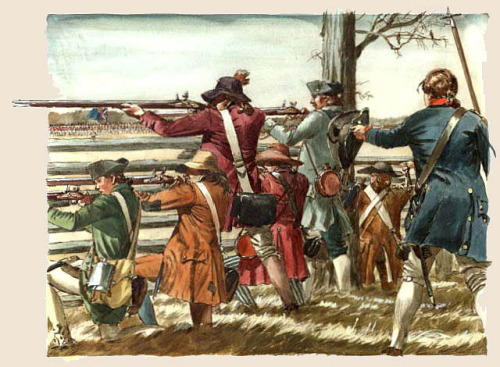Ben Franklin the Military CommanderStatesman, diplomat, political theorist, inventor, musician, ocea
Ben Franklin the Military CommanderStatesman, diplomat, political theorist, inventor, musician, oceanologist, physicist, polyglot, economist, civic activist, philanthropist, physician, meteorologist, demographer, founding father, printer, writer, and womanizer, all terms accurately describe the many roles Benjamin Franklin played throughout his long life. One of the least known roles of “The Great Sage” was of soldier and military commander, which he would undertake in the year 1756 during the French and Indian War. In the spring and summer of 1755 British General Edward Braddock was sent west with an army to capture Fort Duquesne, located on the forks of the Ohio River, what is now downtown Pittsburgh. Franklin had actually personally warned Braddock that his expedition was doomed to failure due to poor tactics, flawed military doctrine, and an underestimation of the enemy. Before reaching Fort Duquesne, the army was ambushed by the French and their Native American allies, and forced to retreat, Braddock himself was killed in the ensuing battle. After the defeat of the British Army under Braddock, French and Native American forces began to conduct raids into the Lehigh Valley of Pennsylvania, sometimes striking only 80 miles from Philadelphia. By New Years of 1756, around 400 settlers had been killed in the raids. Pennsylvania did not have a colonial militia, most likely as a result of the colony’s pacifist Quaker past. The Pennsylvania Assembly quickly passed a bill written by Franklin to raise, train, and equip a colonial militia. Franklin was commissioned a colonel in the militia and charged with ending the raids.Franklin and his regiment set out for the Moravian settlement known as Gnadenhutten, now present day Weissport in Carbon County. He made his son, William, second in command. Careful not to repeat the mistakes of Gen. Braddock, Franklin ordered light infantry and scouts to patrol ahead of the army in order to fend off any possible ambushes and surprise attacks. After warding off several such attacks, the regiment reached Gnadenhutten safely, Franklin ordered the construction of a large fort with 18 foot high walls, swivel guns, and port holes from which riflemen and musketeers could fire from. He then ordered two other forts constructed 15 miles to the east and west, as well as a number of other outposts and checkpoints surrounding the area. Then, he organized a system of random patrols consisting of scouts and soldiers with dogs throughout the area to protect settlements, guard his supply lines, root out guerrillas, and make it difficult for the enemy to conduct any surprise attacks. Furthermore, he created good relations with local settlers and loyal Native American tribes, essentially setting up an intelligence network that would further serve as the eyes and ears of his regiment. Essentially, Franklin was practicing what military strategists would call counterinsurgency warfare, and Franklin’s tactics were little different from what is being done by NATO forces in Afghanistan today. After several skirmishes the raids began to decline in frequency. Within the year, the raids were reduced to a minimum. Of all of Franklin’s roles throughout his life, it was one he seemed to relish the least. He never wore a uniform, never accepted pay, never had a military portrait painted (a traditional practice among high ranking officers), and although he held the rank of colonel, preferred to be called “Mister Franklin” rather than Colonel Franklin. When he returned to Philadelphia after relinquishing his command, he learned that the citizens of Philadelphia had prepared a victory parade for him as he entered the city. Rather than making a spectacle of his return, he quickly snuck into the city in the middle of the night. Though he was an effective military commander, Franklin was a lover, not a fighter. -- source link
Tumblr Blog : peashooter85.tumblr.com
#history#military history#ben franklin#benjamin franklin#pennsylvania history#colonial america

